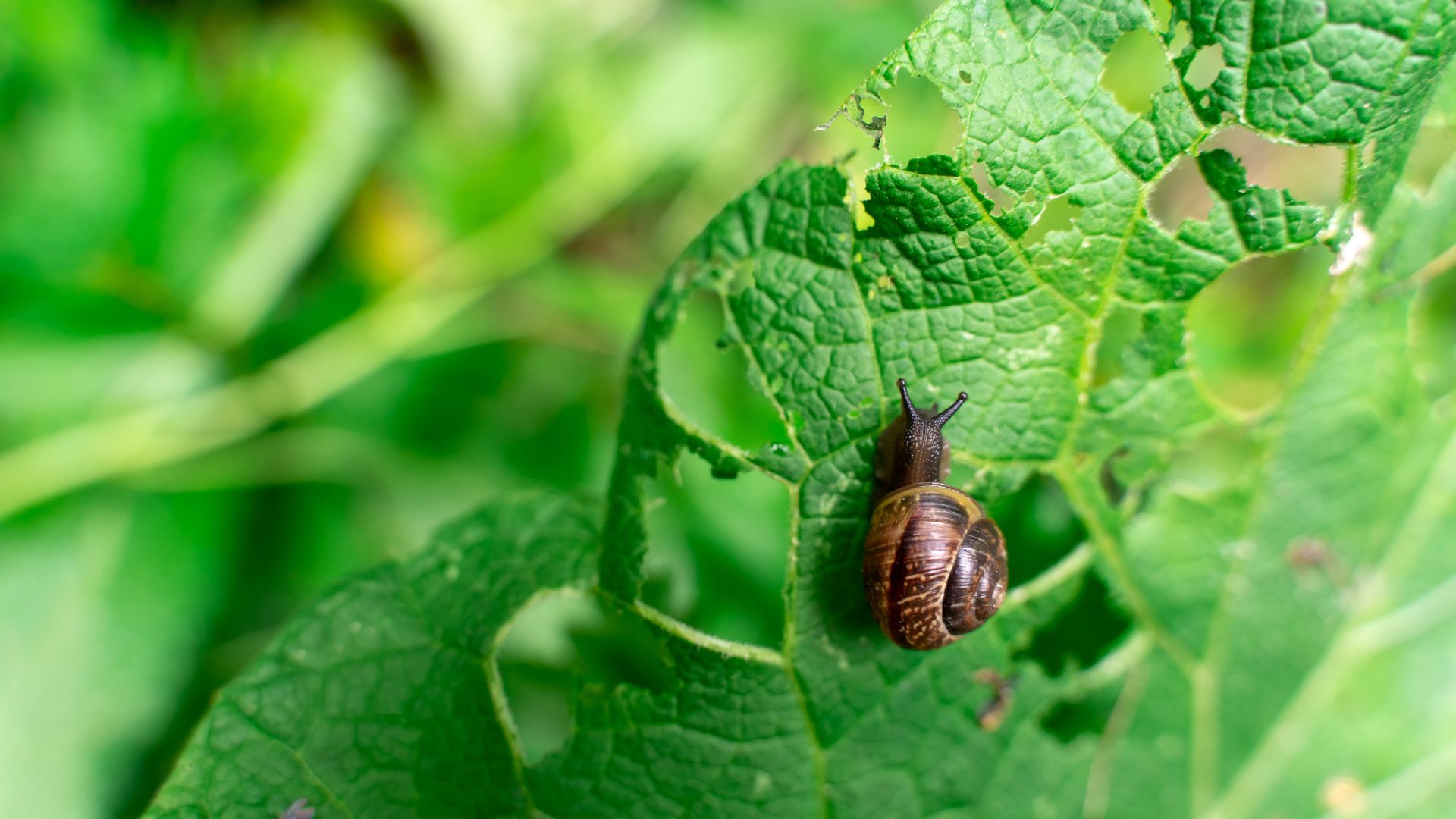
Since commercial slug repellents containing Metaldehyde were banned for causing harm to wildlife and the environment, searching for natural ways to deter slugs and snails has become extremely important. They’re incredibly common pests that love to feast on your plants, vegetables, and flowers. They can even target them before they’ve had a chance to grow. They may be slow, but they can be seriously damaging to your yard.
There are plants that repel roaches, plants to repel moles, and even plants to repel snakes. It should come as no surprise then, that the same rule applies to slugs and snails. While using plants is one of the ways to deter slugs and snails from your yard, fortunately, there are eight more that we’ve compiled below.
Whether it’s a solution you may already have at home, one you can buy, or one that’ll have you rolling up your sleeves and tackling the slugs and snails yourselves, there’s a variety of options that will help you solve your slimy issue.
1. Coffee grounds
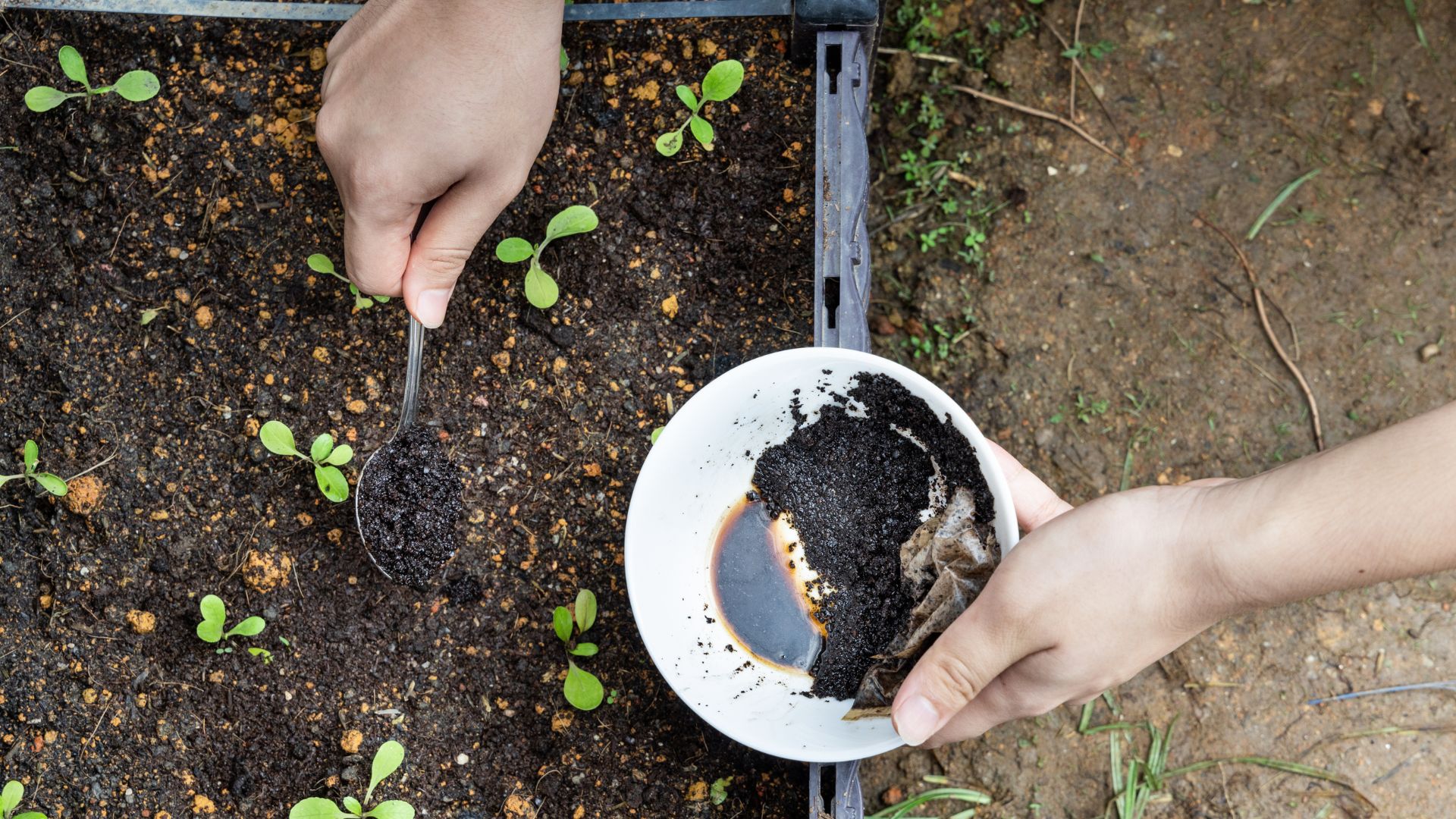
You may love drinking a hot cup from one of the best coffee makers, but slugs and snails most certainly do not. It’s their hate of coffee that may well be the answer to all your slug and snail problems. By simply sprinkling coffee grounds into your soil you’ll not only deter them entirely, but there’s the added bonus the coffee grounds are also great for providing nutrients to your soil. It’s also one of the 9 natural pest repellents for inside your home, too.
It’s worth noting though that while coffee grounds are perfect for acting as a surface-level deterrent, slugs love to burrow underground and can emerge when and where they want to.
2. Copper tape
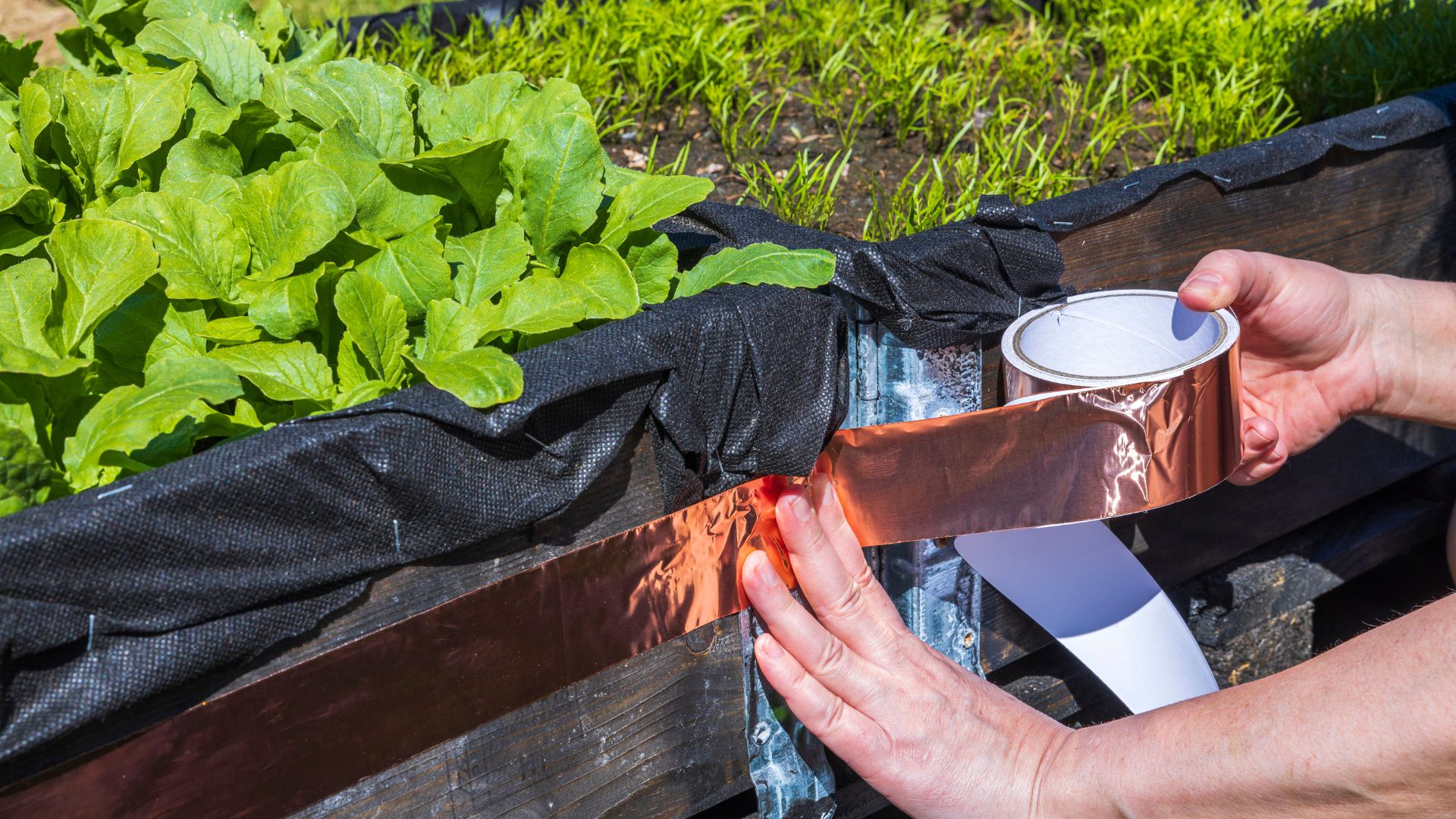
Without getting too scientifically technical, slugs and snails do not cross over copper. It can be incredibly harmful for their slime production, so using copper tape as a barrier around your plants, it’s an excellent deterrent for both slimy garden pests.
Copper tape can be stuck around individual plant pots or beds by encompassing the plant, allowing no entry for snails and slugs. This method is best used for smaller plants though, otherwise, you may end up becoming overwhelmed by tape with too many chances for slugs and snails to find a way in. For example, if a plant grows over the tape, they can use it as a bridge to access your plants.
3. Set a beer trap
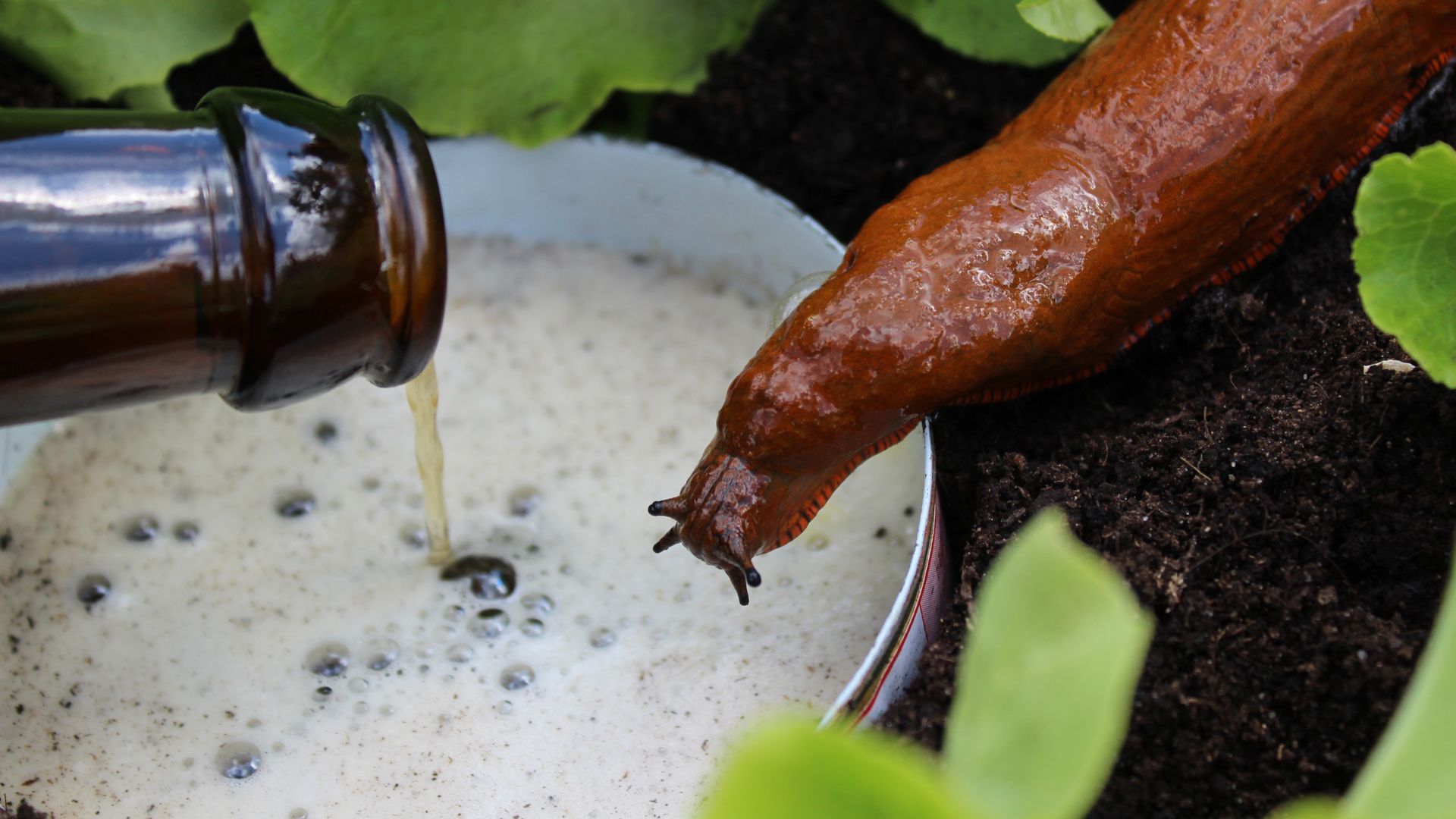
While slugs and snails don’t like coffee, they really like beer. To take advantage of this fact, bury a container such as a yoghurt pot or tupperware into the ground in line with the soil. Fill it around three-quarters of the way with beer, or a simple sugar, yeast, and water mixture, and the slugs and snails will come.
When they arrive to drink the beer, they’ll crawl into the container where you can catch them. There are a few important things to note if considering the beer trap option though. You’ll need to check and empty the container regularly. You’ll also need to replace the beer, or homemade mixture, almost daily to ensure the scent stays. And, it’ll only be effective within a certain range as the beer scent won’t carry far, especially if it’s older. Bottles of old beer are also one of the ways to get rid of fruit flies fast.
4. Eggshells

Another natural way to deter slugs and snails is by using eggshells. Keeping eggshells, drying them out, and then crumbling them around your plants acts as a perfect barrier. Slugs and snails don’t like crawling over them as they find the sharp, jagged edges uncomfortable.
For this, you’ll need to eat a lot of eggs. The barrier will need to be thick and wide to ensure that the slugs and snails don’t try and cross it, hence the amount of eggs needed. An additional advantage of using egg shells is that they’ll break down eventually and add nutrients to your soil, so you won’t have to tidy them up. There's 11 suprising uses for eggshells that you may not know about, and deterring pests is just one of them.
5. Companion planting
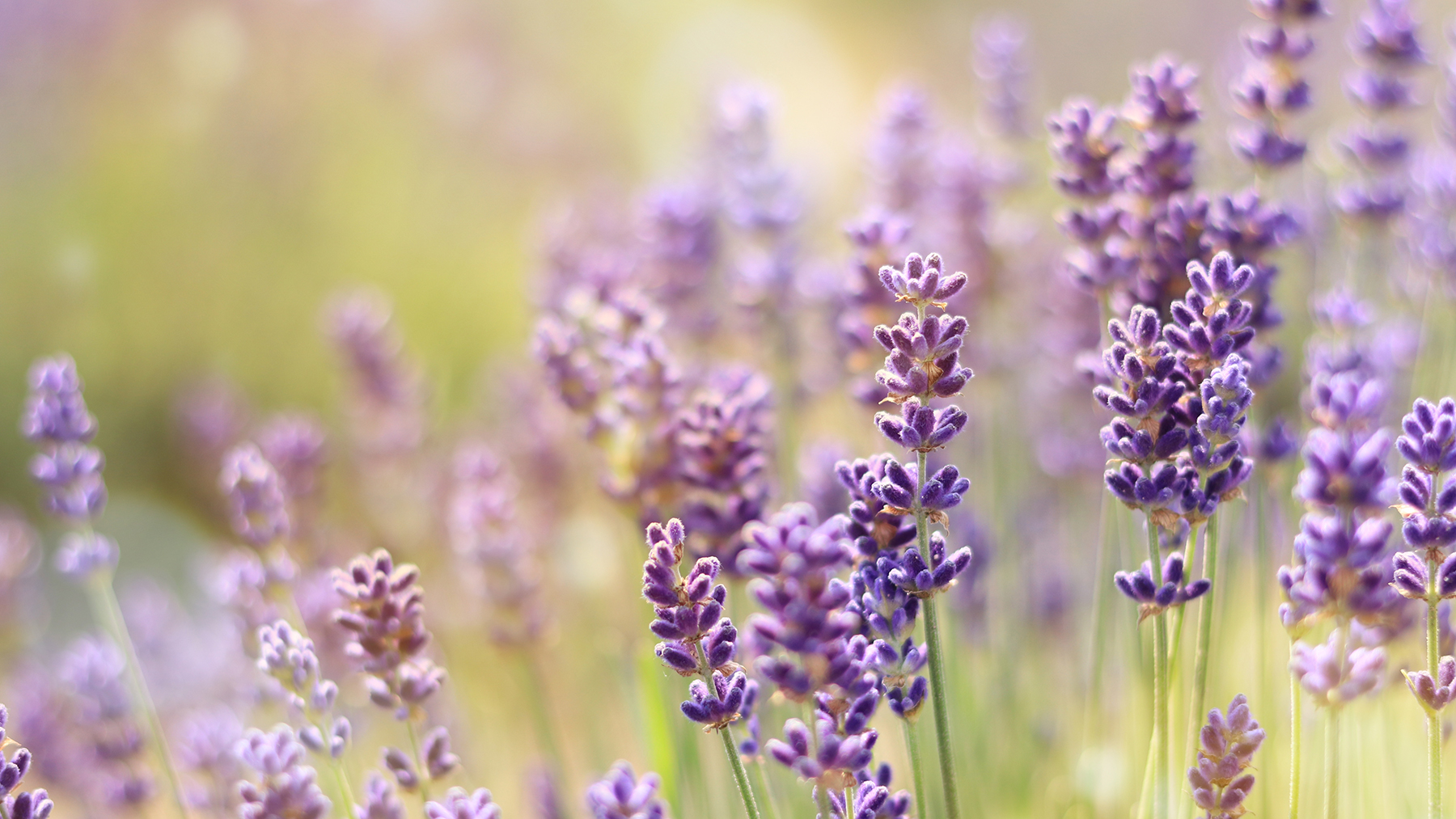
While slugs and snails are partial to munching on your plants, there’s a list of plants that they don’t like. Companion planting then, is a handy tool that works by placing the plants they don’t like alongside the ones they do to act as a natural barrier.
Plants include; rosemary, mint, sage, lavender, chervil, thyme, roses, ferns, hydrangeas, and marigolds. There’s quite a selection and fortunately, they’ll bring fresh herbs, scents, and beautiful flowers to your yard. It’s the aroma and leaf textures that put the slugs and snails off, but something that you can most certainly enjoy. Plants like lavender are also great for repelling ants to keep your home pest-free.
6. Diatomaceous earth (DE)
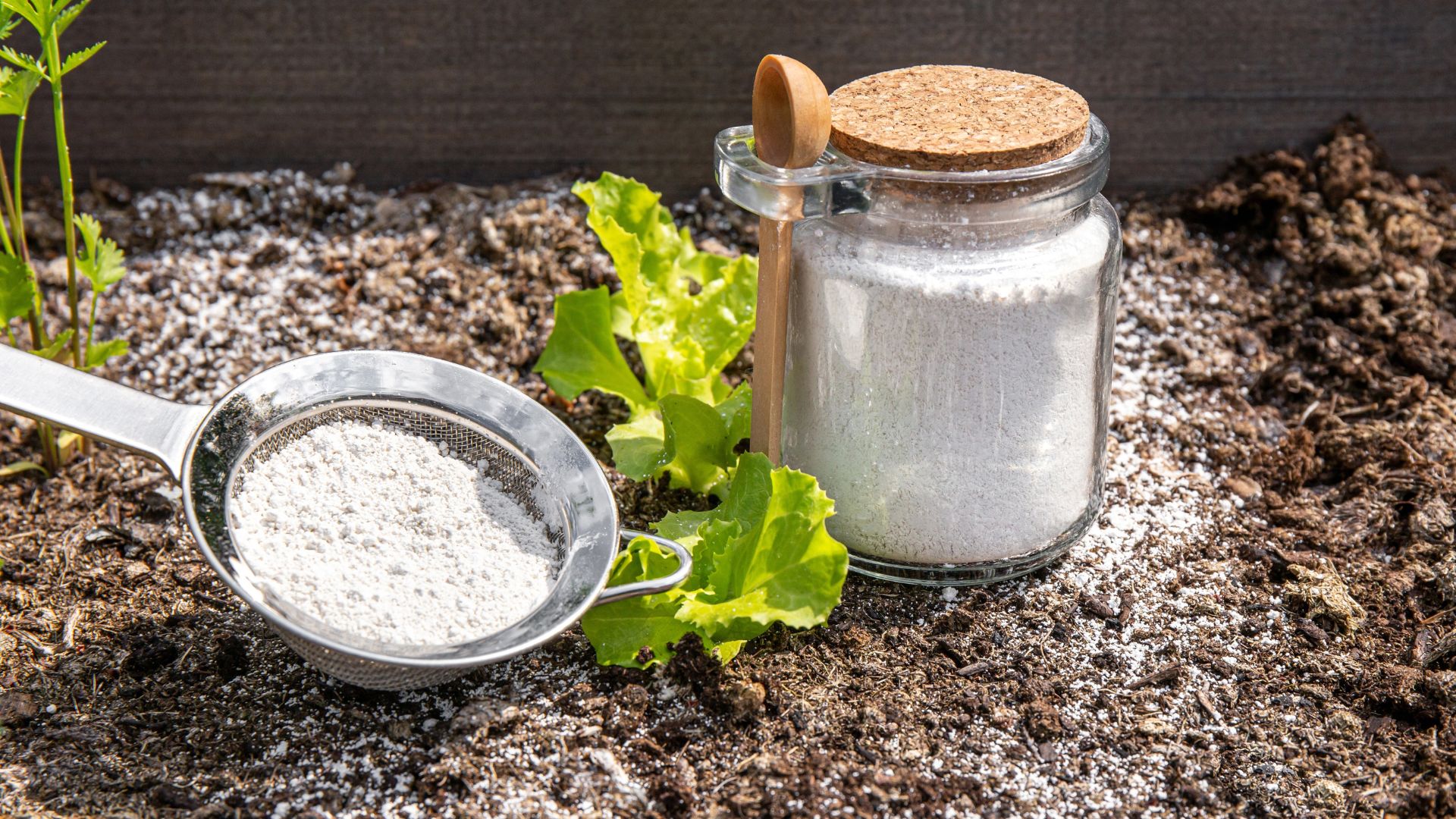
Diatomaceous earth (DE) is a fine, powdery substance created from the fossilized remains of diatoms. Diatoms are algae that live inside glass and fortunately, you won’t have to harvest them and work at creating this powder yourself, as buying it in stores or online is easy. It's also one of the ways to get rid of ticks in your yard too.
The powder can be applied, much like the eggshells, as a barrier around your plants. You’ll want to lay down a barrier that is at least three inches thick and reapply it after rainfall or heavy watering as it’ll dissolve. While DE is harmful to slugs and snails, you don’t have to worry about it being harmful to you or other animals. But, be sure to use the food-grade DE though as this is what works best for pest control.
7. Reduce moisture
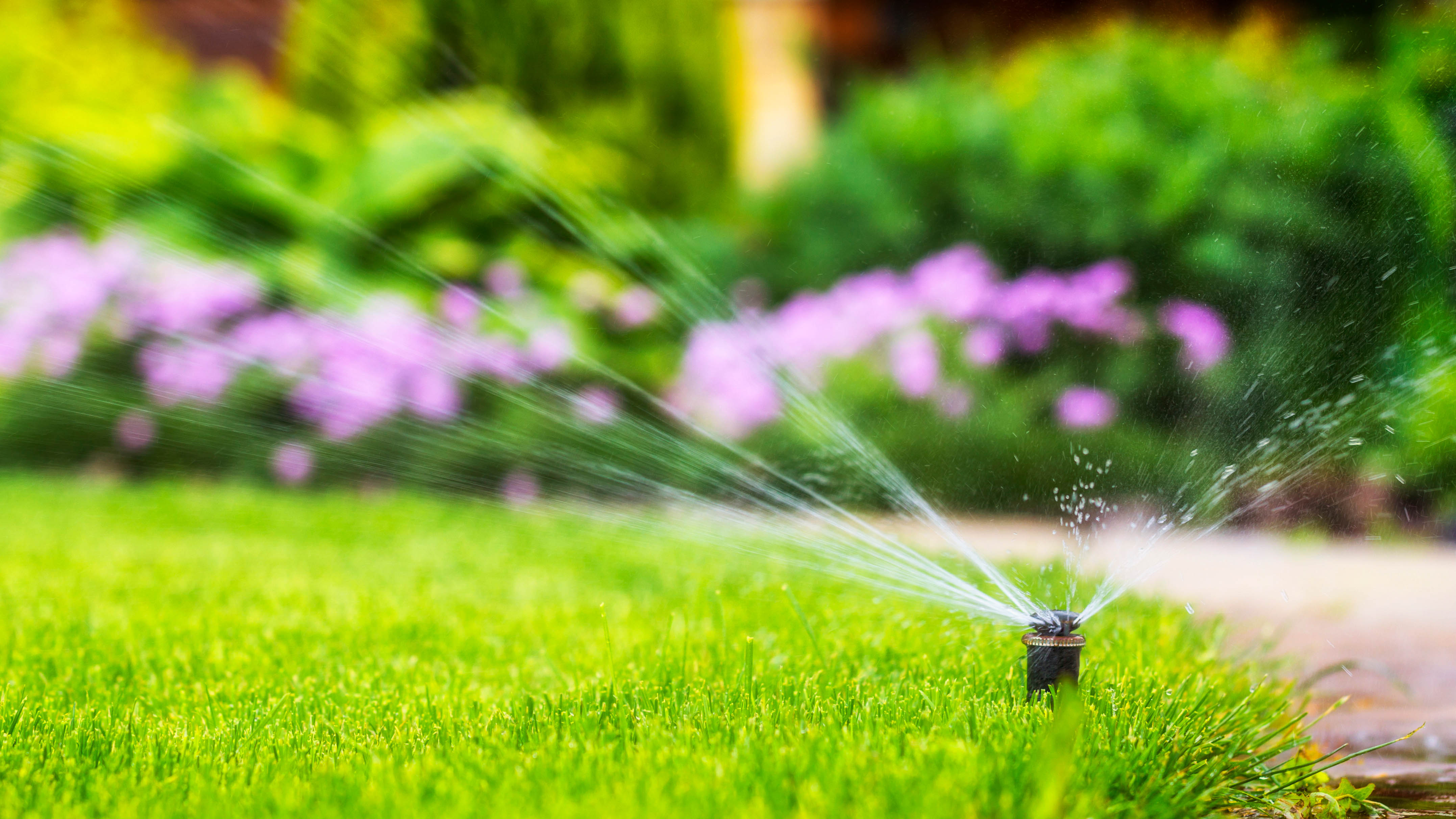
While moisture-sapping powder like Diatomaceous earth works as a barrier, reducing the overall moisture in your plants altogether will work at limiting the appeal for slugs and snails in the first place. For this, don’t overwater your plants. Opt to water them first thing in the morning so that the morning sunshine can dry off before nighttime. Plus, spacing your plants further apart works well at reducing the humidity and moisture-sharing between the leaves.
You can also use a drip irrigation system on your soil, which feeds water directly into your soil and roots, rather than spraying it all over the leaves creating more moisture. If you do find you've drenched your greenery too much, here's 5 tips to save an overwatered plant.
8. Remove by hand
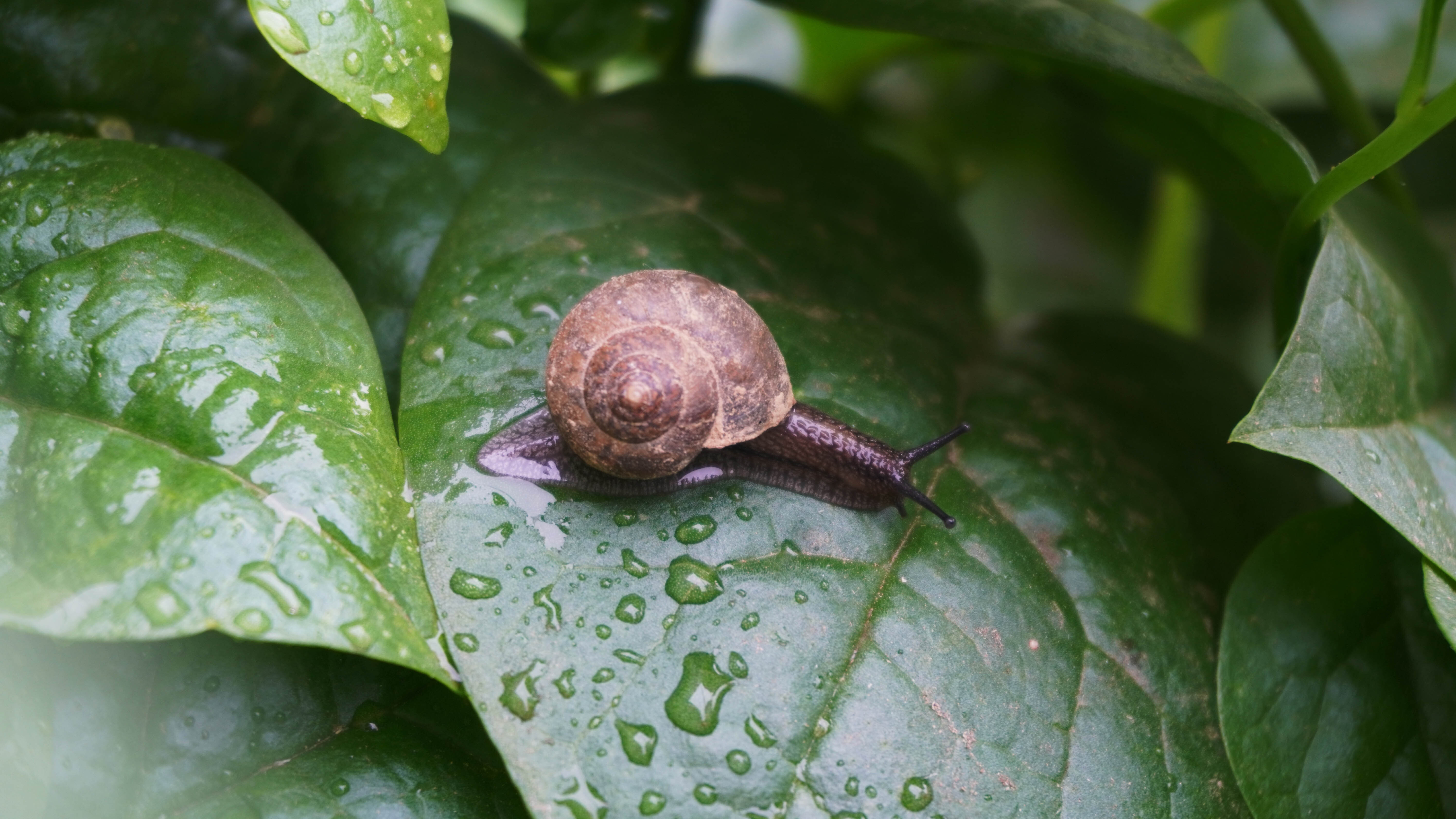
A surefire way of deterring slugs and snails from your yard is by picking them up and moving them away. If you want to control numbers, go out in the evening, armed with a torch, to hunt them down and remove them. If you don’t want to touch them with your hands, you can wear gloves or use a pair of tongs to pick them up.
You can also create a trap for them to gather by wetting soil and placing a board on top. When you lift that, you should find that the slugs and snails have become attracted to the moist conditions you created and you can remove them from hiding in your soil.
9. Encourage predators

If you don’t like the idea of touching them, you can also enlist the help of your yard’s natural predators. Toads, frogs, birds, hedgehogs, and ground beetles all target slugs and snails. For this, you can add bird feeders to your yard, or there's other tips for attracting birds, or even add in a small pond to attract toads and frogs. If you don’t want to put a pond in though, you can also create shady cool spots for them to lounge in by upturning flower pots or creating little caves of stones.
Having pet ducks and chickens will also do the hard work for you. They’ll feast on the slugs and snails and you may even be lucky enough to never notice they’re a problem in the first place.







